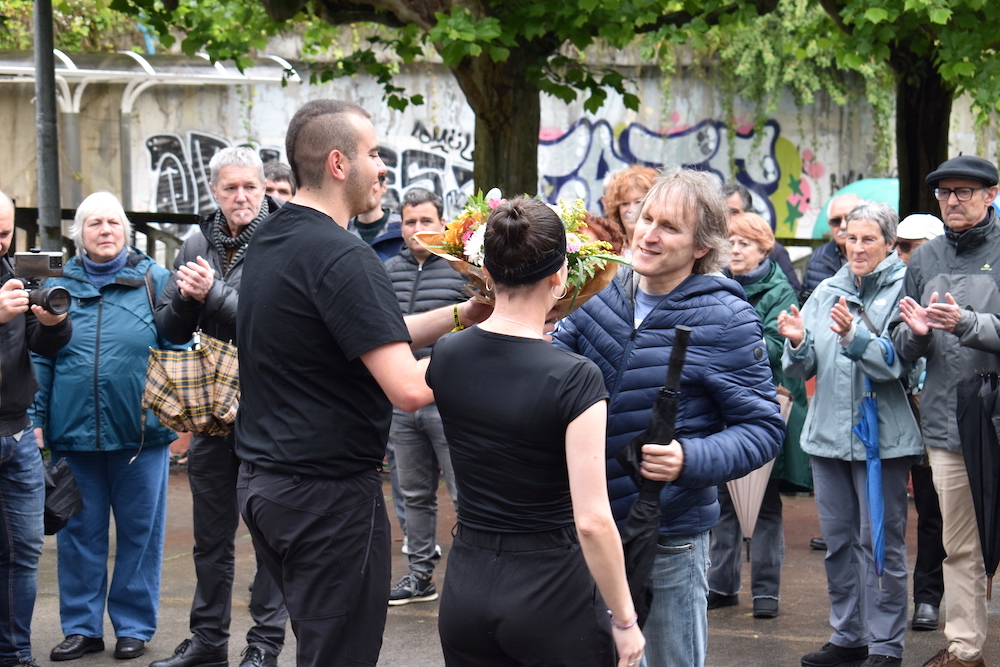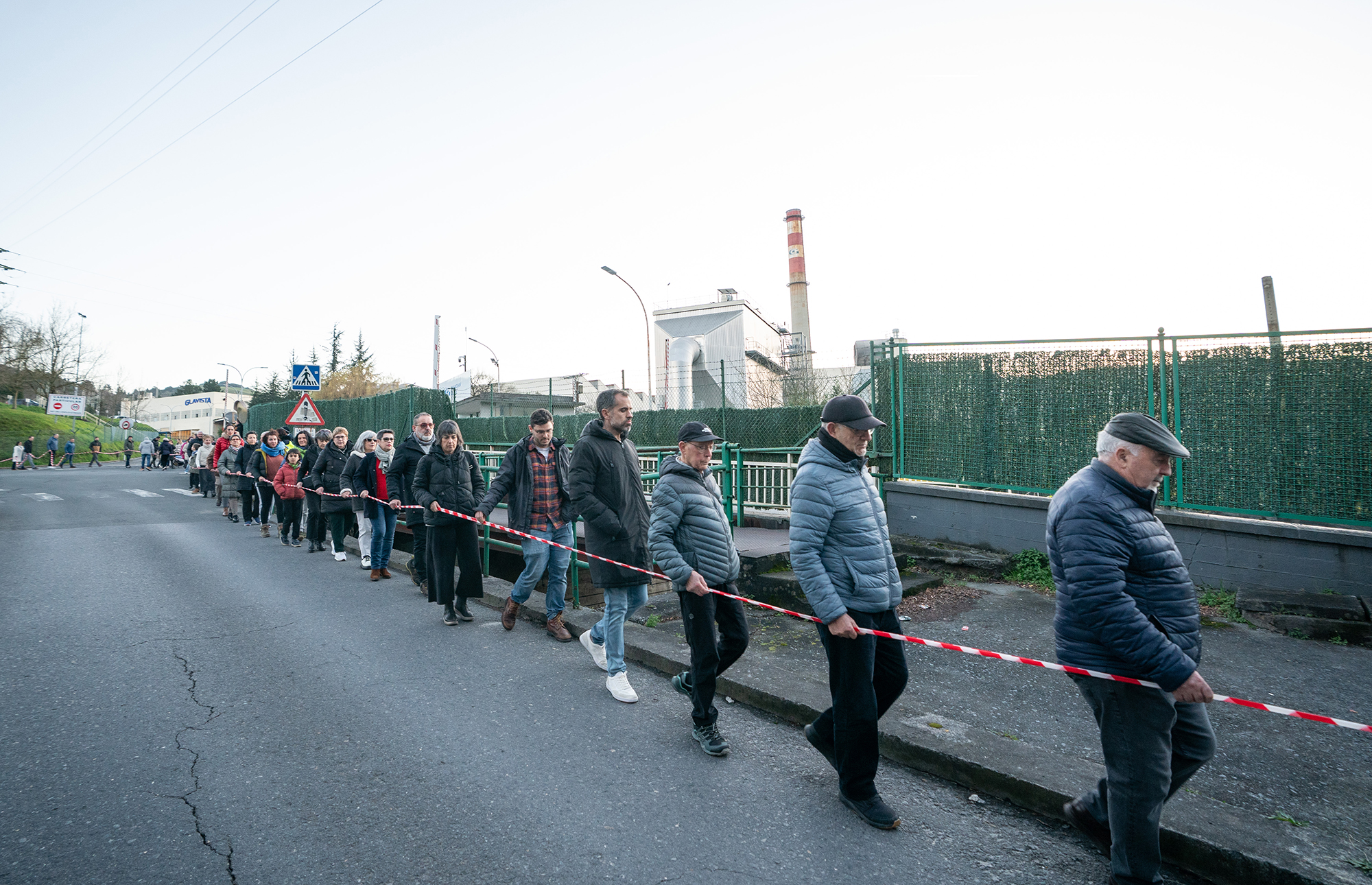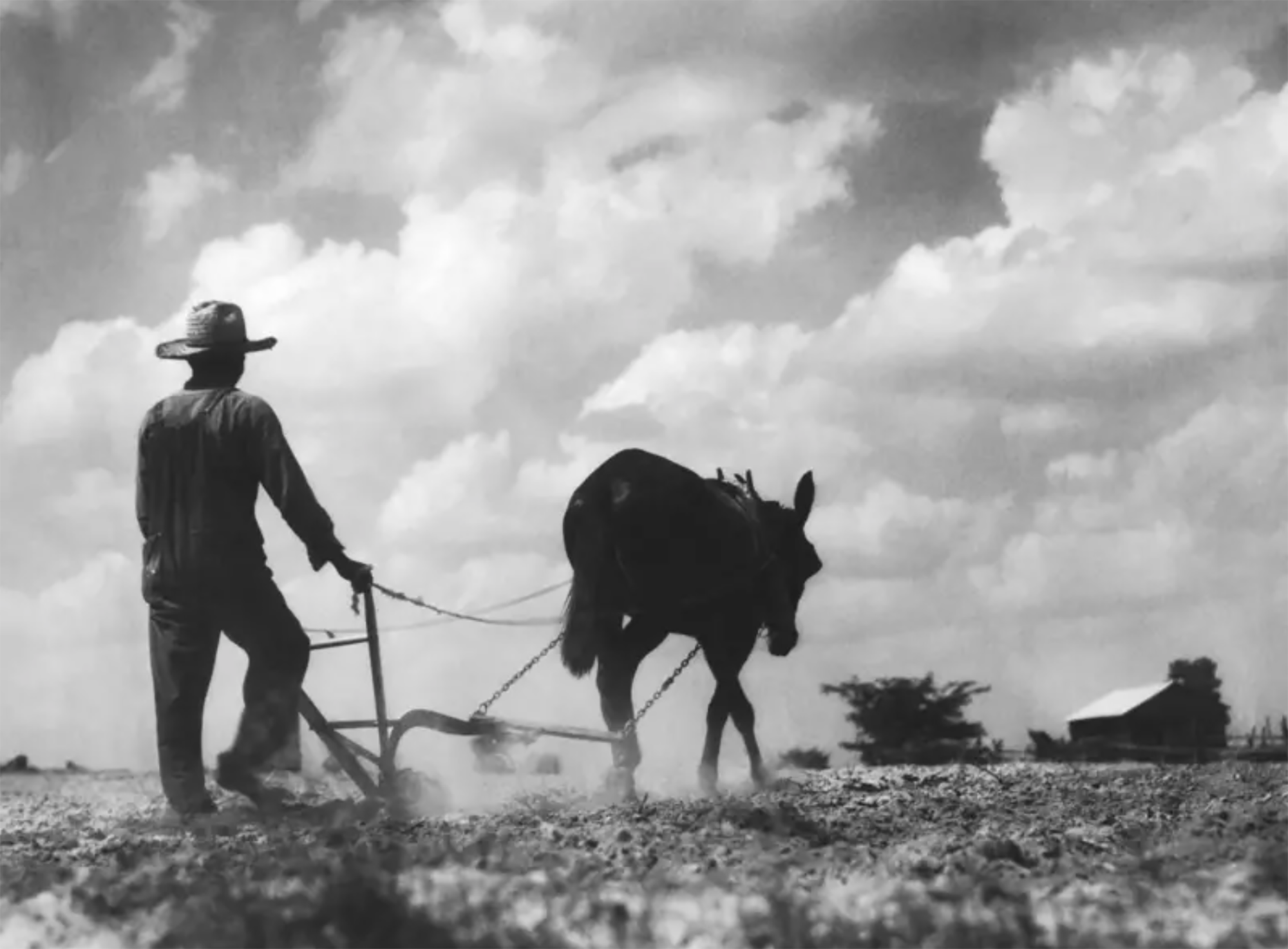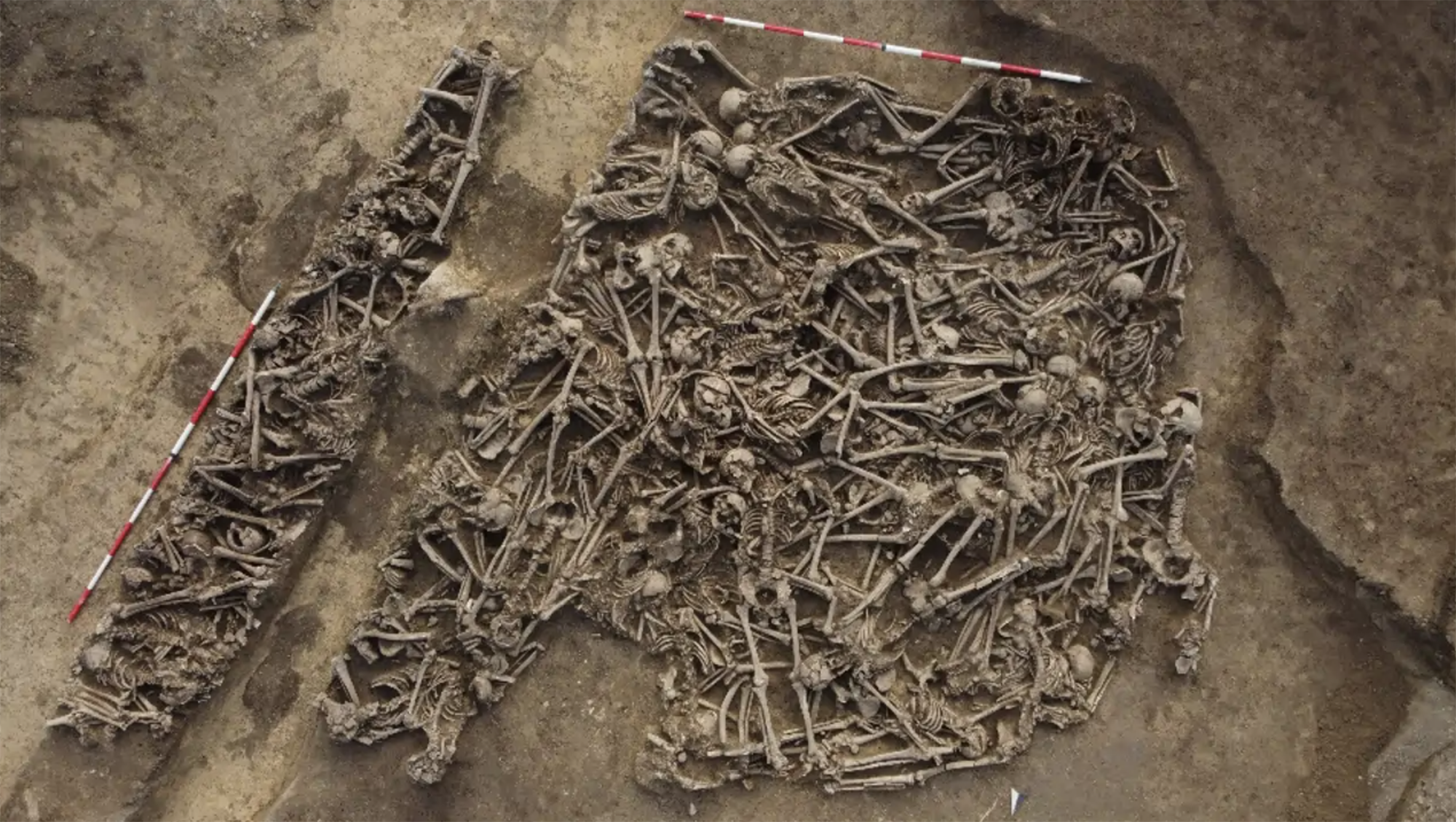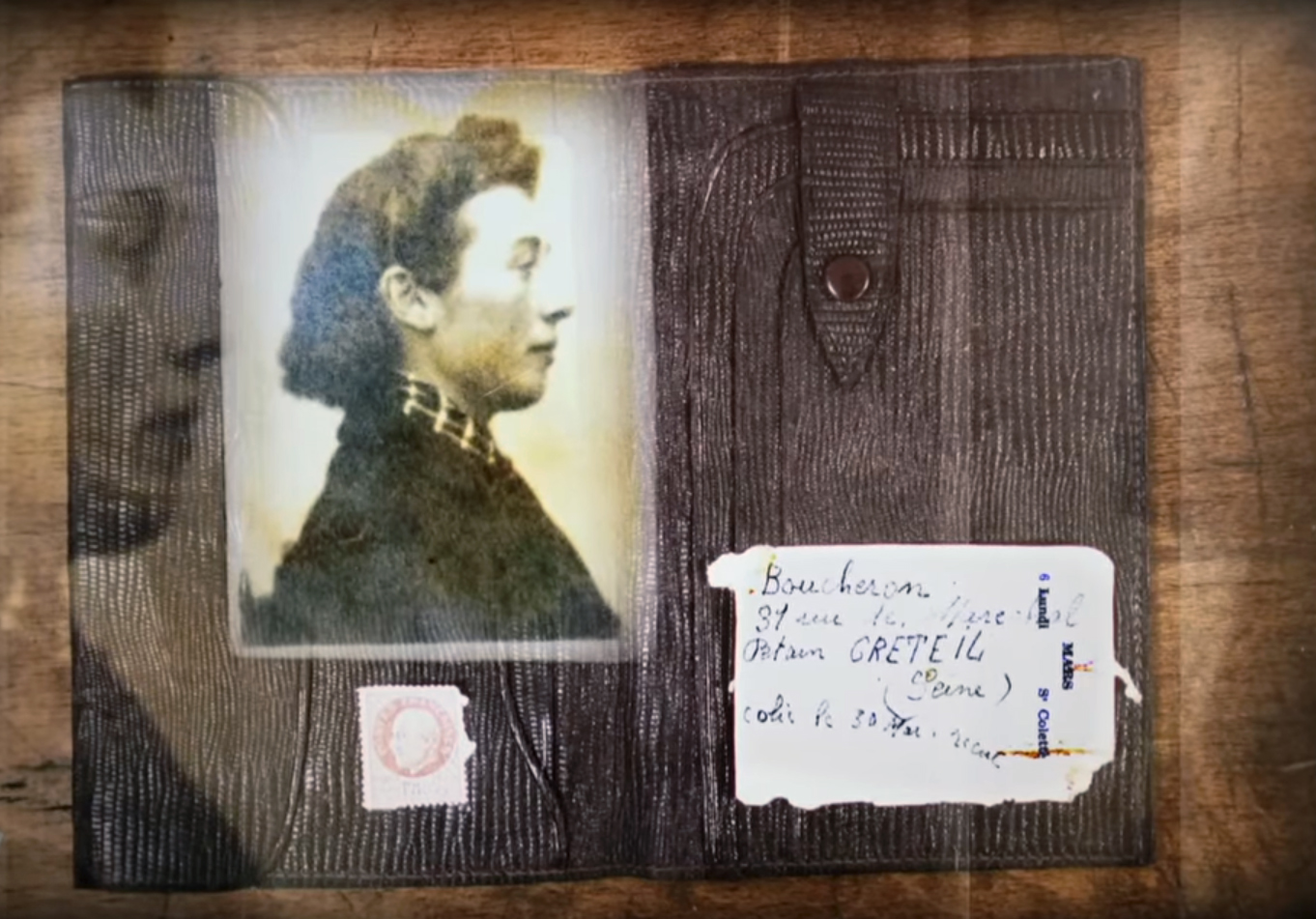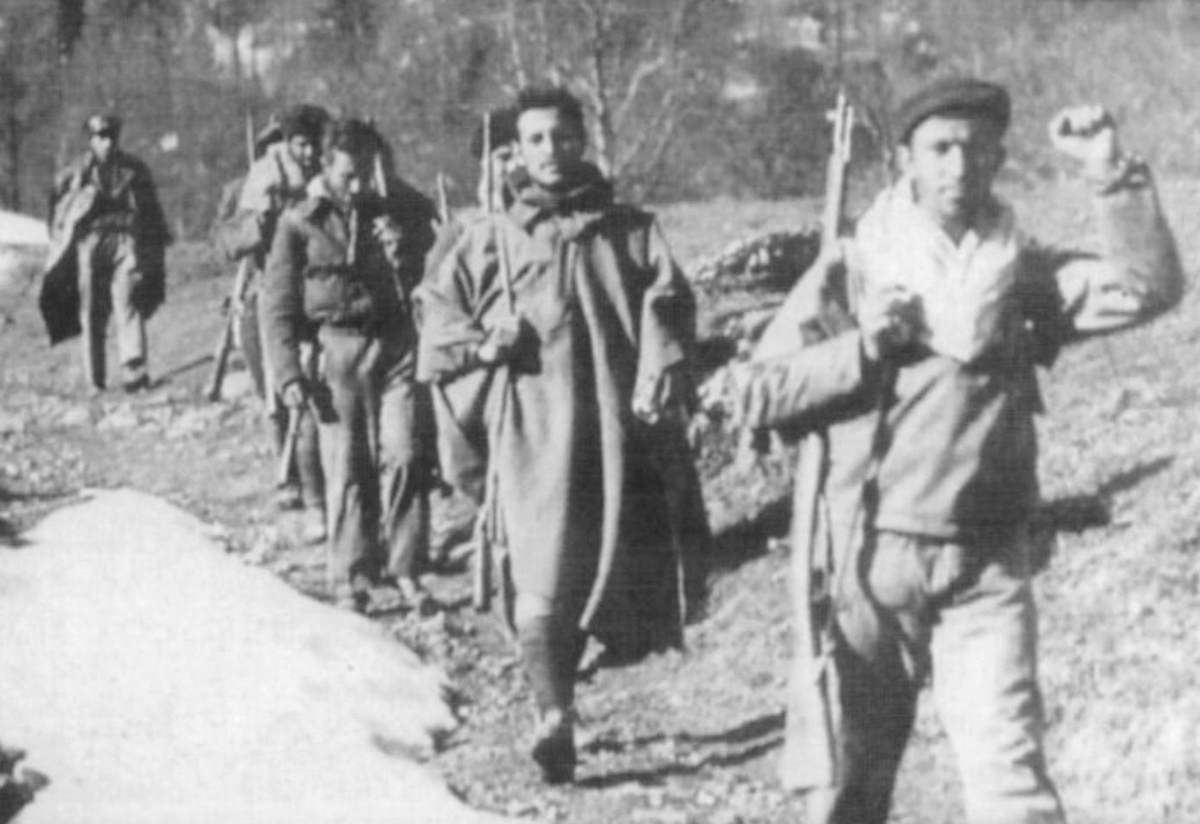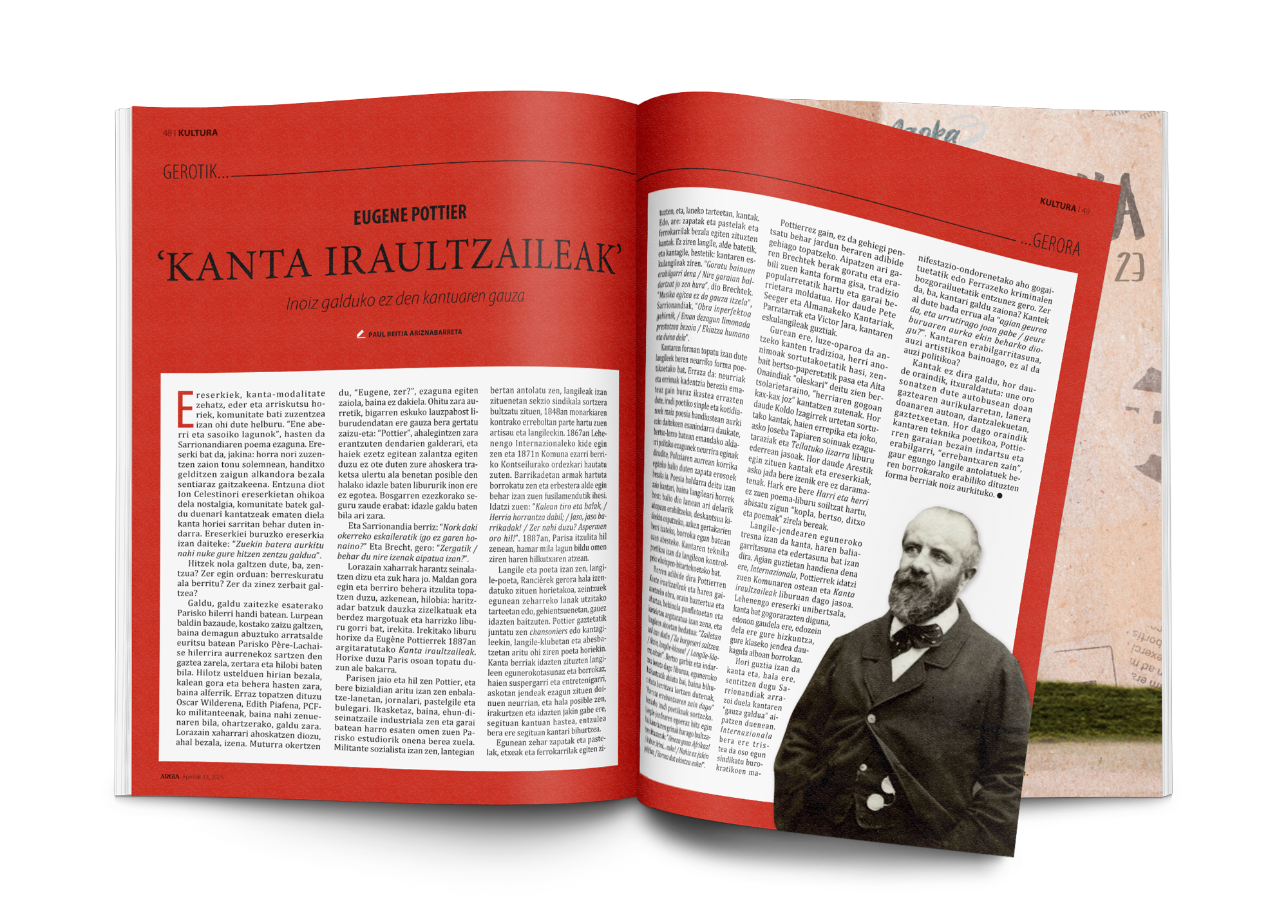Guardians of public heritage at the destination of ecclesiastical authorities
- The Seroras were women in charge of the care of the churches of the villages and were known throughout the Basque Country from the Middle Ages to the twentieth century. But their role was not the same in all territories, nor in all times. These women publicly stood out in local communities, so probably the ecclesiastical hierarchy followed them rigorously. Their remains are still present in the landscape of several villages, such as the houses of seroreros.
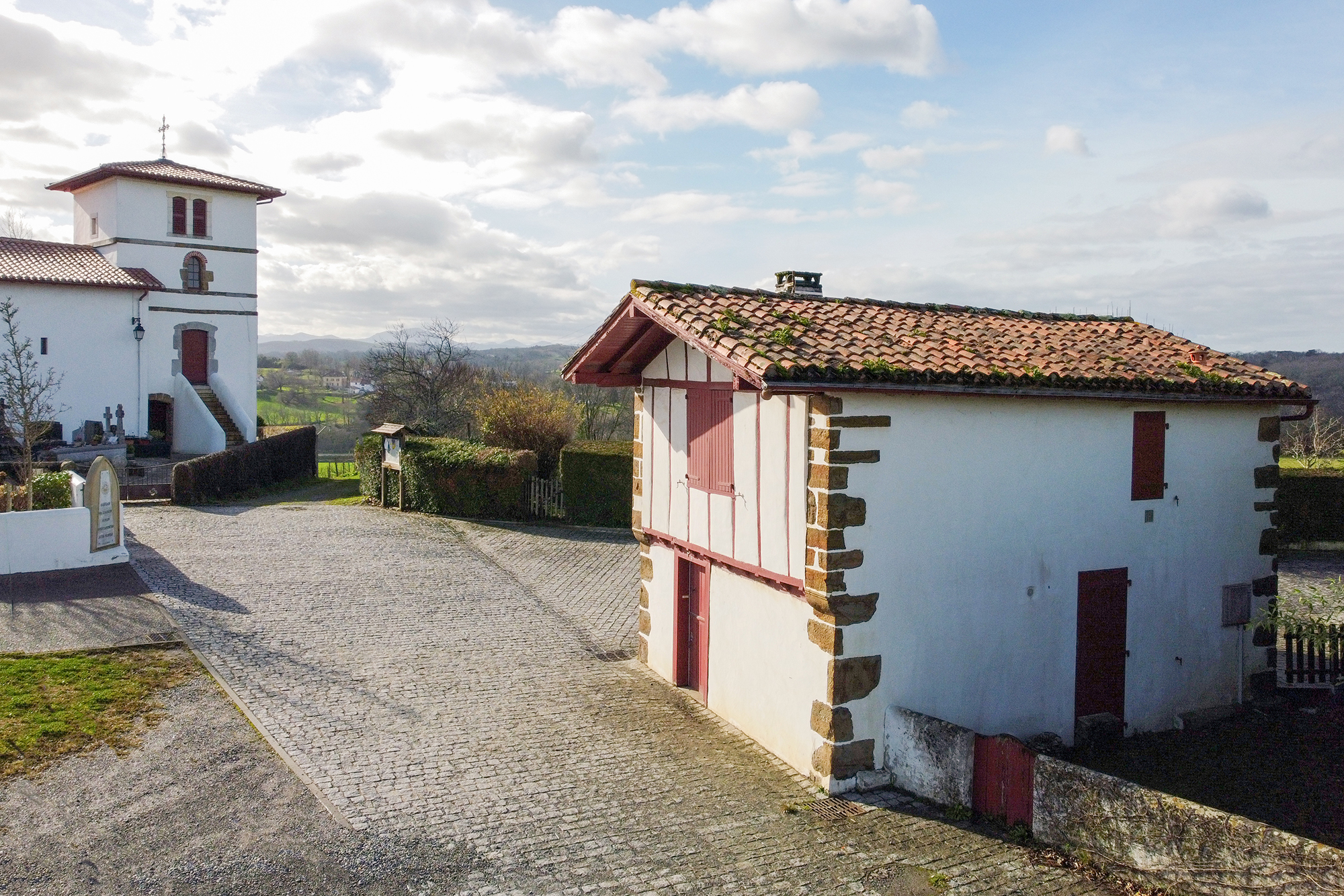
In the middle and eastern variants of the Basque Country, the serora word designates the women in charge of church care. It's been in dictionaries since the 18th century. In the western dialects, the payments of beata and sacristana, derived from Spanish, are used, while in French benoîte has been used.
But if we begin to delve into the subject, we face a more complex reality. A reality linked to the spatial organization of peoples, to the power relations existing in local societies and to gender roles. And by pulling that thread, we'll also discover unexpected vestiges if we look back at the landscape of forever.
Sero's autonomous life and popularity were probably the main reasons for the continuous measures taken against them by the ecclesiastical hierarchy.
Fame and suspicions
Sero's oldest mentions appear at the end of the Middle Ages. In 1416 the municipalities of Zumaia and Getaria signed an agreement on the ownership of the estuary of the Urola. This document cites the “Church of Santiago” in the sandy area of the same name and, attached to it, a “house of sero”. In the following centuries, the presence of sero is evident in the extensive Basque Country, despite its different functions and characteristics. On the coast of Lapurdi, for example, the inquisitor Pierre Lancre wrote in 1612 that among the works of the serora was the settlement of the altars of the churches, washing the cloths and preparing the images of the saints. Other sources give them greater prominence, such as the custody of the keys of the churches to open the doors in the mornings and close them at night; the provision of all the necessary cultural elements; the support for priests in the offices; the touching of the bells; or the collection of amines and the management of ecclesiastical affairs on a daily basis.
Therefore, these women, in addition to working as guards of the buildings, were important social agents in the relations between the people of the towns and neighborhoods and the ecclesiastical hierarchy. It is known that the serora of each people was appointed by local councils among local women, at least since the sixteenth century. Sometimes, well-reputed widows and/or mature wives were selected, while others were single. They lived in town-owned houses and, to ensure their maintenance, they could receive a salary and complete it with amoines.
.jpg)
Sero's autonomous life and reputation within local communities were probably the main reasons for the continued measures taken against them by the ecclesiastical hierarchy. For example, in 1540 a synod in the diocese of Pamplona established that the name of every serora should be ratified by the bishop “after analyzing his person, his life, his age and his behavior”. In application of this rule, in 1626 the bishop issued a ruling prohibiting them from fulfilling their duties in the Baztan “until they are not in Pamplona to be inspected and consulted”. The file of the lawsuit contains statements by women and witnesses voicing that they were “elderly and honest people” and emphasizing their virtue and devotion.
Seroras de la capital: chain of three centuries
María Ibarrarte
1668-1712
Graciana Uhalde
1712-1717
Marion Eskiula
1761-1773
Graciana Beltsusarri
1773-1775
Mariua Lalanne
1775-1785
Maria Ornaletxe
1785-1817
Catalina de Irigoyen
1817-1847
Dominica Olhagarai
1847-1852
Estefana Oihartzabal
1852-1891
Margarita Baladé
1891-1919
Another example is the Zikuñaga district of Hernani. In 1646, the corporation filed a complaint with the Bishop of Pamplona about the abal Serora Josepa Ollo went to Mass to collect soda to survive. For the municipal authorities, this custom endangered the social order, “because many others will come next to them”. In the end, they had to give the serora a life rental to do their job with dignity.
Lancre spoke in the same vein, who stated that Sero’s social status was “obscene and wrong” and stated that the bishop of Bayona was working to “correct” the situation. In Bizkaia, in 1617 it was prohibited by law for the Seroras to run any religious office, after which a judicial question of several years was initiated.
The repression reached its peak in the diocese of Calahorra, which included Álava and Bizkaia, when a Royal Decree of 1769 decreed the total disappearance of the sero. In the dioceses of Pamplona and Baiona, on the contrary, the phenomenon of the sero remained, more or less, until the 20th century, but the accusations against them were not rare, including extramarital sexual imputation.

Serorategi, Seroraene, Seroretxe...
The importance of Seror in the social landscape of many Basque peoples remains remarkable in some material remains that can be observed there and here.
One of them is funerary steles. In Sara, for example, we read the following inscription in the wake of a woman who was a serora: Hau da thomba herri hunec fincatua iarlecu a selected tomb of the serora reached in 1686 and those of içan. They can be found similar in other towns of Lapurdi, such as Getaria, Lehuntzen, Hiria or Senpere.
.jpg)
Another significant mark is the houses where Sero lived. In the fields of dissemination of the word serora they are easily identified by their toponyms. One of the most widespread variants is the Serorategi, with 34 examples extended from Gipuzkoa to Baja Navarra, including the Bidasoa valley. The second variant is Seroretxea; another 34 examples can be counted, especially in Gipuzkoa, although in Bizkaia there are also few examples. The third variant is the Seroraenea houses, with 22 examples in Lapurdi and in the Bidasoa valley. In addition, in the Pyrenean area of Navarra is the Castilian variant of the Casa de la Serora. It should be noted, however, that the word serora is only used in certain regions and that serpent houses will probably also be in other regions, perhaps with other names.
Among the houses identified, many of them are now missing or very modified. In some cases, their location can only be determined by oral sources and old photographs, such as Antion and Donamartiri, in Zumarraga. In other cases, as in the case of the hermitage of San Martín de Orio, the ruins are still present.
However, the structures of 71 seroretxeas scattered throughout the different territories of the Basque Country are still preserved. They are usually located next to the church and cemetery, forming the religious center of each people. Therefore, the houses of sero have been significant patrimonial elements in the social and spatial organization of these peoples, although today they have been hidden in the shadow of other more monumental buildings. However, these buildings offer interesting explanations about how to organize space, popular architecture, or the history of gender relations.
Eastern Basque coast: small wooden houses
On the eastern Basque coast there are several serorerías that share a singular architecture, forming a homogeneous typological set. These are small buildings. It consists of two floors and loft with wooden framework structure. The side walls are made of stone following the molds of popular architecture that extends across Lapurdi and the Bidasoa Valley.
One of the earliest examples is in the Magdalena de Hondarribia, in the fishing neighborhood. The documents of the Municipal Archive refer for the first time to the Casa de la Serora in 1539, inhabited by Catalina de Alkaiaga. The building was rebuilt in 1589 on the occasion of church repairs. A carpenter from San Juan de Luz was commissioned to build a wood structure, which probably explains the great similarity that the house has with the serveras of Lapurdi.
.jpg)
One of the clearest parallels is Jatsu's. The town separated from Uztaritze in the 17th century, rebuilding the chapel of San Sebastian as a new parish, to which the cemetery and the house of Seroraenia joined.
In Arbona, Anderescaenia was built in the early 17th century and María Lizarraga was the first serora of it in 1651. The documents have since mentioned other seroras: Maria Haranburu (1703), Maria Hayet (1774), Maria Olhatza (1808), Juana Laffargue (1851) and Maria Ana Laffargue (1854).
The oldest mentions of Sero appear at the end of the Middle Ages and their presence in the long and wide Basque Country was notable in the following centuries
The Seroraenia of the capital is another good example. According to a notarial document of 1692, it was built for a serora named María Salenave, who died in 1662, so the house is usually built between 1640-1660. Also in this case we know the names of seros that were almost three centuries. It is noteworthy that many of these women have been serving for years as representative of a social role rooted in the community.
Baztan: houses on refuge
As for the popular architecture, the Baztan valley has unique characteristics, as is also the case for seroreros. They are wooden and stone houses built on wooden or stone frames of the church portals. Elbet Serorategi is the simplest example. The church was built in the 16th century and it is
possible that shortly afterwards the house of the serora, whose serora was Juana de Azpilicueta in 1626, may be added. Its structure is made of wooden frame, built around the bell-tower, forming a small porch on the southwestern facade of the church.
The Serorero de Berroeta is also a small house with wooden structure. In this case it is also adjoining the church of the 16th century, forming a portico in front of the main porch. In 1626, Maria Hormaetxe lived. Today it has more recent buildings on both sides, sacristy on the right and schools on the left. The original sera can be wider and cut in the construction of these new buildings.
The Serorio de Amaiur is attached to the southern facade of the church of the Asuncion, forming a large portico. Juana Salanova was the first serora documented in 1626. Some photographs clearly show that the building was built with wooden frames, but unfortunately the works carried out at the beginning of the 21st century have completely faded this original structure.
However, although the structure of Amaiur has been lost, another is preserved in Arizkun. In this case also the 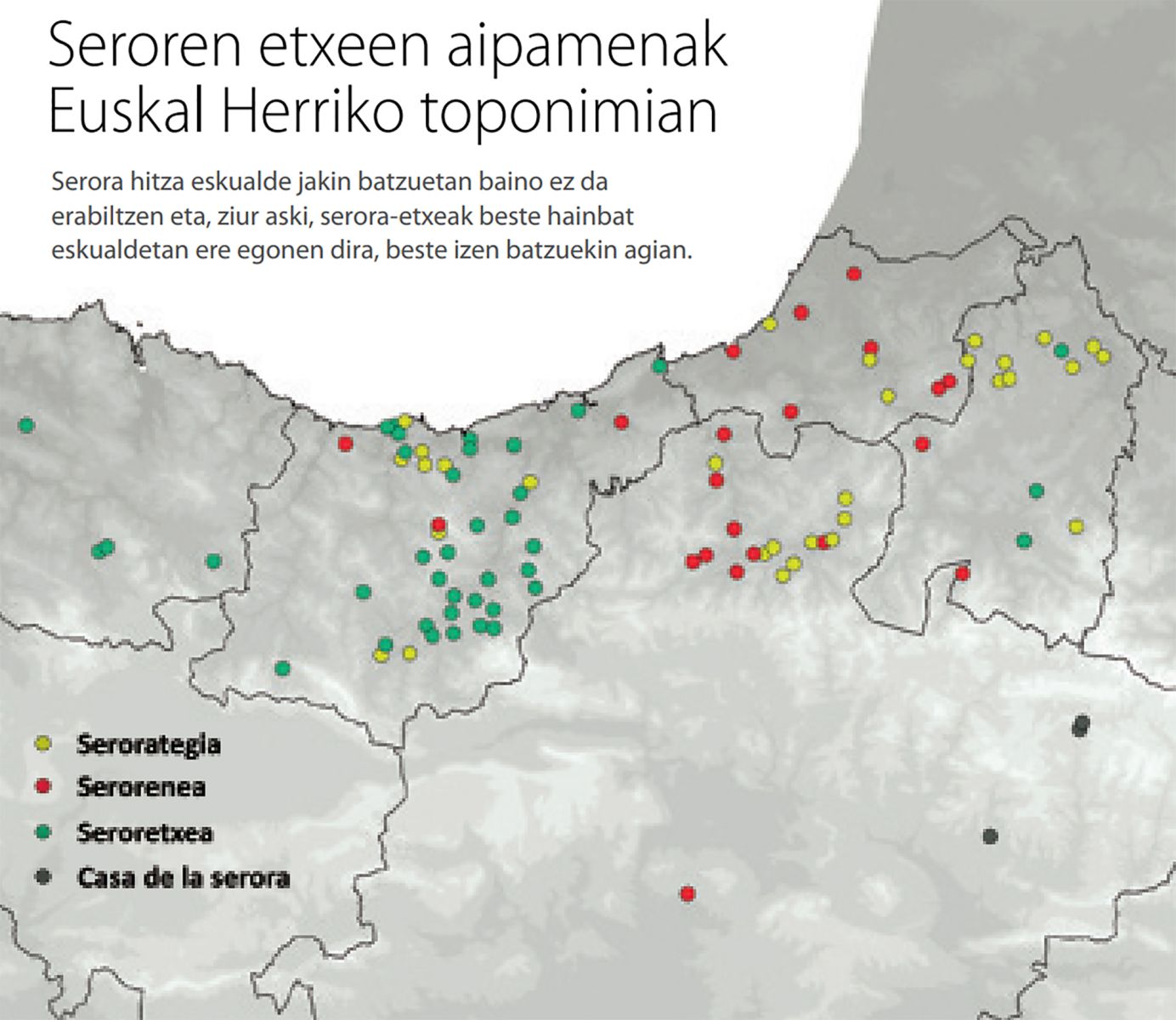 Serorategi is attached to the south facade of the church of San Juan, forming a longitudinal porch. In 1626 the Estebenia Notes are cited as a local serora, but the current building is undoubtedly more modern. On the one hand, the structure of the house rests on the sacristy, built in 1736 by order of the Baztanese official Juan Bautista Iturralde. On the other hand, the portico under the serorategi is organized as a long portico reminiscent of the large villages of the Baztan, similar to those built in the 18th century.
Serorategi is attached to the south facade of the church of San Juan, forming a longitudinal porch. In 1626 the Estebenia Notes are cited as a local serora, but the current building is undoubtedly more modern. On the one hand, the structure of the house rests on the sacristy, built in 1736 by order of the Baztanese official Juan Bautista Iturralde. On the other hand, the portico under the serorategi is organized as a long portico reminiscent of the large villages of the Baztan, similar to those built in the 18th century.
Heritage and memory
Along with churches and cemeteries, seroreros have been a prime reference in the landscape of many peoples. This is a widespread phenomenon throughout the Basque Country, from the Middle Ages to the twentieth century.
The presence of these buildings highlights the role of the Seroras in the dialectic of the power relations of the citizens with the ecclesiastical authorities, who, being people chosen by the people, can be seen as social references and who, eventually, could act as a counterpart to the priests. In addition, they were one of the few examples that showed an important social role for women, in addition to a partially autonomous life. They were basically women who lived outside the strict framework given to women as a wife and housewife and, as in the case of single or widowed women, questioned the established social order. This could explain the continuous suspicions that occurred on them and the ecclesiastical authorities wanted to impose their limits until they almost disappeared in some regions.
.jpg)
In short, the figure of these women also offers a way of reflection from the feminist point of view, as it shows a complex and dynamic image of the realities of the past.
The footprints of that past are there, standing, without anyone's attention, often in decline. It has never taken long to gather these little stories from history and to recognize the patrimonial nature of these elements to regain their name, their being and their memory to the serora of the past.
Washington, D.C., June 17, 1930. The U.S. Congress passed the Tariff Act. It is also known as the Smoot-Hawley Act because it was promoted by Senator Reed Smoot and Representative Willis Hawley.
The law raised import tax limits for about 900 products by 40% to 60% in order to... [+]
During the renovation of a sports field in the Simmering district of Vienna, a mass grave with 150 bodies was discovered in October 2024. They conclude that they were Roman legionnaires and A.D. They died around 100 years ago. Or rather, they were killed.
The bodies were buried... [+]
My mother always says: “I never understood why World War I happened. It doesn't make any sense to him. He does not understand why the old European powers were involved in such barbarism and does not get into his head how they were persuaded to kill these young men from Europe,... [+]
Until now we have believed that those in charge of copying books during the Middle Ages and before the printing press was opened were men, specifically monks of monasteries.
But a group of researchers from the University of Bergen, Norway, concludes that women also worked as... [+]
Florentzia, 1886. Carlo Collodi Le avventure de Pinocchio eleberri ezagunaren egileak zera idatzi zuen pizzari buruz: “Labean txigortutako ogi orea, gainean eskura dagoen edozer gauzaz egindako saltsa duena”. Pizza hark “zikinkeria konplexu tankera” zuela... [+]
Ereserkiek, kanta-modalitate zehatz, eder eta arriskutsu horiek, komunitate bati zuzentzea izan ohi dute helburu. “Ene aberri eta sasoiko lagunok”, hasten da Sarrionandiaren poema ezaguna. Ereserki bat da, jakina: horra nori zuzentzen zaion tonu solemnean, handitxo... [+]
Linear A is a Minoan script used 4,800-4,500 years ago. Recently, in the famous Knossos Palace in Crete, a special ivory object has been discovered, which was probably used as a ceremonial scepter. The object has two inscriptions; one on the handle is shorter and, like most of... [+]











